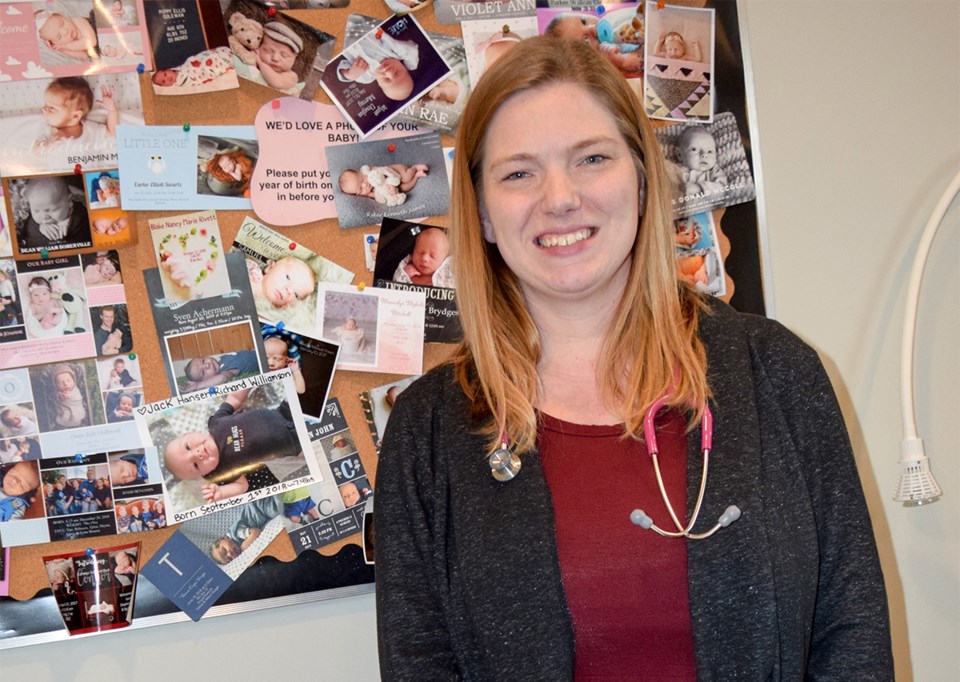Cathy Dobson
Midwives in Sarnia are increasingly in demand and they soon hope to expand their responsibilities at Bluewater Health.
So says Lindsay Ottens, one of eight midwives working with Midwifery Services of Lambton-Kent out of a band new office building at 350 Christina St. N.
Midwives delivered 16% of the 1,083 babies born in Sarnia last year, and that percentage continues to climb, Ottens said.
“We know there are women who want a midwife in Sarnia but can’t get one. Some months we’re full and can’t take everyone who applies,” she said.
That demand prompted Ottens and fellow midwife Cynthia Thoren to form a partnership for construction of the new and much larger building for Midwifery Services of Lambton-Kent.
They were located on Michigan Avenue but moved to the higher-profile location Jan. 1.
The new building accommodates eight midwives and is more centrally located on a busy transit route. It has a large waiting room, three clinic rooms, and is fully accessible with space to grow, said Ottens.
It’s been 25 years since midwifery became regulated and fully funded by the Ontario government. Sarnia’s first midwife, Debbie Smith, began practicing in the early 1990s when it was challenging to get hospital privileges. Those hurdles have been overcome and all midwives at the new centre have privileges.
About 85% of deliveries attended by a local midwife are in hospital, said Ottens
“We have a good relationship with our hospital and we’re looking to increase our scope.”
They are currently training to use patient-controlled analgesia pumps, and plans are underway for training to manage epidurals and, possibly, to care for low-risk vaginal births that require inductions.
“Women realize (having a baby) doesn’t have to be over-medicalized,” said Ottens. “That being said, we are very integrated into the health care system and do many of the same things an obstetrician will do, like order lab tests and ultrasounds when necessary.”
Ottens, 34, has been a midwife 13 years. She grew up in Petrolia and says she knew by age 16 what she wanted to do.
“I knew a midwife and I also knew women who had midwives and I realized I wanted to help women become moms and support them at that time in their lives.”
Becoming a midwife in Ontario means four years of university at McMaster, Ryerson or Laurentian. That includes attending about 100 births and a 2.5-year clinical placement.
Ottens attended Laurentian University in Sudbury where she earned a Health Sciences degree in midwifery.
“The profession is growing and it’s very competitive to get into these programs,” she said.
Expectant moms appreciate the team approach midwives offer, Ottens said.
“They like the home visits because we see baby and mom three times in the first week to ensure both are doing well.
“We also have lower re-admission rates postpartum, lower C-section rates and higher rates of breastfeeding,” she said.
